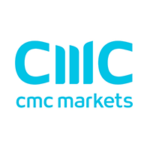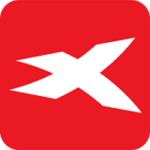Best Brokers for margin trading 2025
Looking to maximize your buying power in 2025? The right margin trading platform can make all the difference—offering competitive rates, powerful tools, and strong safety measures. Here are the top brokers leading the way this year.

The 10 Best Brokers for Margin Trading in 2025
Margin trading has become one of the most powerful tools for traders who want to maximize their market opportunities. By borrowing funds to increase their buying power, investors can amplify both potential gains and risks.
In 2025, the landscape of margin trading is more competitive than ever, with brokers and exchanges offering innovative features, tighter spreads, lower interest rates, and advanced risk-management tools. Seeking the most efficient platform, choosing the right margin broker can make all the difference.

Interactive Brokers
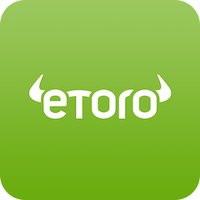
eToro

Fidelity
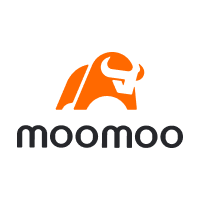
Moomoo

J.P. Morgan Self-Directed Investing
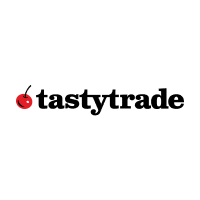
Tastytrade

Webull

Robinhood
Alpaca Trading

Plus500
Key Takeaways
Best for Lowest Margin Rates



Best for Advanced Traders & Tools


Best for Market Diversity & Community


Best for Banking + Brokerage Integration


Best for Developers & Automation

Top Brokers Key Features

After conducting over 200 hours of testing across platforms, our team at BrokerGuide.com narrowed down the stats that truly impact your trading experience.
In this section, we highlight each broker’s exclusive in-house ratings, along with the minimum deposit required to get started and the average account opening time. These quick-glance features give you a clear picture of how easy it is to begin trading on margin, while also showing how each platform stacks up in terms of accessibility, efficiency, and overall user experience.
| Broker | Overall Rating | Minimum Deposit | Account Opening Time |
|---|---|---|---|
| Interactive Brokers | 4.9/5 | $0 | 1-3 days |
| eToro | 4.7/5 | $50 | 1 day |
| Fidelity | 4.5/5 | $0 | 1-3 days |
| Moomoo | 4.5/5 | $0 | 1-3 days |
| J.P. Morgan | 4.5/5 | $0 | 1 day |
| Tastytrade | 4.4/5 | $0 | 1 day |
| Webull | 4.4/5 | $0 | 1 day |
| Robinhood | 4.5/5 | $0 | 1-5 days |
| Alpaca Trading | 4.3/5 | $0 | 1 day |
| Plus500 | 4.3/5 | $100 | 1 day |
How to Choose a Broker for Margin Trading in 2025
Margin trading can amplify both your opportunities and your risks, which makes selecting the right platform absolutely critical. Not every broker is created equal, and the “best” choice often depends on your trading goals, style, and level of experience. Here are the key factors to consider before you commit:
Pro Tip: Always test-drive a broker with a small funded account or demo mode before committing serious capital — it’s the best way to see if the margin policies, tools, and execution speed truly fit your trading style.
Broker Guide
Critical Pitfalls to Avoid
Ignoring the True Cost of Borrowing
Many traders focus only on leverage without realizing how quickly margin interest and overnight fees add up. A high margin rate can silently eat away at profits, especially if trades are held longer than expected.
Overleveraging Too Early
Jumping into maximum leverage without experience often leads to blown-up accounts. Even small market swings can trigger margin calls, forcing you to sell at a loss or deposit more cash unexpectedly.
Trusting Poorly Regulated Brokers
Not all platforms are equally safe. Choosing a broker without strong regulatory oversight, a solid reputation, or reliable execution can put your funds and trades at serious risk.
Pro Tip: Avoid these pitfalls, and you’ll save yourself not just money, but also stress, frustration, and potentially devastating mistakes.
Broker Guide
Online Brokers - Users Data
Understanding how many people actually use a broker can reveal a lot about its reliability, reputation, and overall appeal. In this section, we present verified user data for each of the top margin trading platforms — including account numbers, active users, and global reach where available. These figures provide context beyond features and fees, helping you gauge whether a platform is trusted by a niche group of professionals, a growing community of retail traders, or a massive global audience.









Fee Comparison
When trading on margin, costs can quickly add up — not just from the interest charged on borrowed funds, but also from trading commissions and regional stock fees. This section provides a side-by-side comparison of key expenses, focusing on USD margin rates, GBP margin rates, UK stock fees, and US stock fees. By breaking down these numbers, you’ll see which brokers truly offer the best value for margin traders in both U.S. and international markets.
| Broker | USD Margin Rates | GBP Margin Rates | US Stock | UK Stock |
|---|---|---|---|---|
| Interactive Brokers | 5.8% | 5.7% | $1 | £3.0 |
| eToro | 8.3% | Not Available | $1.0 | £0.8 |
| Fidelity | 11.325%
| Not Available | $0 | £9 |
| Moomoo | 6.8% | Not Available | $0 | Not Available |
| J.P. Morgan Self Directed Investing | 9.1% | Not Available | $0 | Not Available |
| Tastytrade | 11.0% | Not Available | $0 | Not Available |
| Webull | 8.7% | Not Available | $0 | Not Available |
| Robinhood | 5.8% | Not Available | $0 | £0.0 |
| Alpaca Trading | 7.0% | Not Available | $0 | Not Available |
| Plus500 | 21.5% (CFD Financing Rate) | Not Available | $3.9 CFD Fee | $0 |
Overall
- If low cost of borrowing is your priority → look at Interactive Brokers, Robinhood, or moomoo.
Non-Trading Fees
Have you ever noticed how hidden costs can add up even when you’re not placing trades? Non-trading fees such as withdrawal charges, inactivity penalties, or currency conversion costs can quietly erode your profits if you’re not paying attention. In this section, we break down how each broker handles these extra expenses so you can avoid surprises and keep more of your returns.
| Broker | Account Fee | Inactivity Fee | Withdrawal Fee | Deposit Fee |
|---|---|---|---|---|
| Interactive Brokers | $0 | $0 | ||
| eToro | $5 | $0 | ||
| Fidelity | $0 | $0 | ||
| Moomoo | $0 | $0 | ||
| J.P. Morgan Self Directed Investing | $0 | $0 | ||
| Tastytrade | $0 | $0 | ||
| Webull | $0 | $0 | ||
| Robinhood | $0 | $0 | ||
| Alpaca Trading | $0 | $0 | ||
| Plus500 | $0 | $0 |
Regulations and Safety Measures
A platform can have low fees and advanced tools, but if it isn’t properly licensed and secure, your money could be at risk. That’s why it’s essential to look at who regulates a broker, what safety nets are in place, and how seriously they take client protection.
Why Regulation Matters
Before you commit your money, ask yourself: Who’s watching the broker? Strong regulation ensures that trading platforms follow strict financial standards, keep client funds separate, and operate transparently. Without oversight, traders risk facing unfair practices or even fraud.
Global Watchdogs
Top brokers are supervised by trusted authorities such as the SEC (United States), FCA (United Kingdom), ASIC (Australia), and CySEC (Cyprus). These regulators enforce rules on capital requirements, reporting, and investor protections—giving traders peace of mind that their broker isn’t operating unchecked.
Security Beyond Licenses
Regulation is only part of the story. Leading platforms also safeguard accounts with two-factor authentication, encryption, and in some cases, insurance protection like SIPC in the U.S. or FSCS in the U.K. These measures add another layer of defense for your funds. Pro Tip: Don’t just take a broker’s word for it. Cross-check their license number directly on the regulator’s website—it’s the fastest way to separate safe platforms from risky ones.
Pro tip: Always verify a broker’s regulatory licenses and investor protections before opening an account. With the right safeguards, you can trade confidently knowing your money is secure.
How to Verify a Broker’s Regulation in 1 Minute
Checking a broker’s regulatory status doesn’t have to be complicated. In fact, with the right steps, you can confirm whether a platform is properly licensed in under a minute. Here’s how:
1. Find the Broker’s License Number
Go to the broker’s official website and look at the footer or the “About Us” page. Reputable brokers always display their license number and the name of their regulator.
2. Visit the Regulator’s Website
Type the regulator’s name (e.g., FCA, SEC, ASIC) into a search engine along with “register” or “license lookup.” This will take you directly to the regulator’s official database.
3. Cross-Check the Details
Enter the broker’s license number into the regulator’s database. Make sure the company name, license status, and permissions match what the broker advertises.
Pro Tip: If you can’t find the broker in the regulator’s database, that’s a red flag. Avoid trading until you get 100% confirmation.
Comparing the Best Brokers
Choosing the right broker can feel overwhelming with so many options on the market. That’s why we’ve created a quick snapshot of the top platforms, highlighting their standout features, fees, and what sets them apart. This comparison gives you a bird’s-eye view of how each broker stacks up, so you can spot the one that best fits your trading style.

Interactive Brokers
Known for ultra-broad global market access and professional-grade tools, this platform offers tiered, low margin rates and deep research/charting that serious traders rely on. Its margin rates and financing tiers are published and transparent on the IBKR site (useful if you shop by exact APRs).
| Interactive Brokers Overview | Interactive Brokers Data |
|---|---|
| Minimum Deposit | $0 |
| Deposit Method | Bank Transfer |
| Withdrawal Method | Bank Transfer |
| Withdrawal Fee | $0 |
| Account Opening Time | 1-3 Days |
| Inactivity Fee | |
| Review | Read Here |

eToro
Standout feature: social & copy-trading that lets less experienced traders mirror professionals while accessing stocks, crypto, and CFDs across many markets. Fees and product-specific costs (spreads/overnight) are visible in eToro’s fee pages and PDFs, so check instrument-level charges before using leverage.
| Interactive Brokers Overview | Interactive Brokers Data |
|---|---|
| Minimum Deposit | $50 |
| Deposit Method | Bank Transfer, Credit and Debit Cards, eToro Money, Neteller, Skrill, Klarna, Giropay, Trustly, iDEAL, RapidTransfer, Przelewy 24 |
| Withdrawal Method | Bank Transfer, Credit and Debit Cards, eToro Money, Neteller, Skrill, Klarna, Giropay, Trustly, iDEAL, RapidTransfer, Przelewy 24 |
| Withdrawal Fee | $5 |
| Account Opening Time | 1 Day |
| Inactivity Fee | |
| Review | Read Here |

Fidelity
A heavyweight for investors who value institutional-grade research, mutual fund access, and a highly trusted brand — ideal if you want breadth of products alongside margin capabilities. Note that Fidelity’s published base margin rate is substantially higher than many discount brokers, so margin costs can be material unless you have large balances.
| Interactive Brokers Overview | Interactive Brokers Data |
|---|---|
| Minimum Deposit | $0 |
| Deposit Method | Bank Transfer, Credit Cards, Debit Cards, PayPal, Venmo, Check, Wire Transfer |
| Withdrawal Method | Bank Transfer, Check, Electronic Funds Transfer (EFT), Bank Wire |
| Withdrawal Fee | $0 |
| Account Opening Time | 1 Day |
| Inactivity Fee | |
| Review | Read Here |

Moomoo
Attractive to active retail traders who want low headline margin rates (advertised around ~6.8% for certain U.S. accounts) plus $0 commissions and free level-2 quote access for deeper market visibility. The platform pairs low-cost margin with fast charting and mobile/desktop parity, making it easy to trade intraday.
| Interactive Brokers Overview | Interactive Brokers Data |
|---|---|
| Minimum Deposit | $0 |
| Deposit Method | Bank Transfer, Wise |
| Withdrawal Method | Bank Transfer |
| Withdrawal Fee | $0 |
| Account Opening Time | 1-3 Days |
| Inactivity Fee | |
| Review | Read Here |

J.P. Morgan
Best for users who prioritize a one-stop banking + investing experience — integration with Chase delivers convenient funding and familiar UX, while margin pricing follows a published prime-plus schedule. It’s a reputable choice for clients who value brand stability and bank integration more than the absolute cheapest margin rates.
| Interactive Brokers Overview | Interactive Brokers Data |
|---|---|
| Minimum Deposit | $0 |
| Deposit Method | Bank Transfer |
| Withdrawal Method | Bank Transfer |
| Withdrawal Fee | $0 |
| Account Opening Time | 1 Day |
| Inactivity Fee | |
| Review | Read Here |

Tastytrade
Geared toward options and active strategy traders, the platform emphasizes options/futures tools and education and offers competitive per-contract execution pricing for serious derivatives users. However, margin borrowing costs and any required permissions make it better suited to active options traders than buy-and-hold margin users.
| Interactive Brokers Overview | Interactive Brokers Data |
|---|---|
| Minimum Deposit | $0 |
| Deposit Method | Bank Transfer |
| Withdrawal Method | Bank Transfer |
| Withdrawal Fee | $0 |
| Account Opening Time | 1 Day |
| Inactivity Fee | |
| Review | Read Here |

Webull
Popular with retail traders for a polished mobile + desktop experience, $0 commission U.S. equity trading, and tiered premium plans that lower margin rates for higher-value customers. It’s a balanced pick for traders who want modern UX and decent charting without paying built-in commissions.
| Interactive Brokers Overview | Interactive Brokers Data |
|---|---|
| Minimum Deposit | $0 |
| Deposit Method | Bank Transfer |
| Withdrawal Method | Bank Transfer |
| Withdrawal Fee | $0 |
| Account Opening Time | 1-3 Days |
| Inactivity Fee | |
| Review | Read Here |

Robinhood
Extremely easy onboarding and a mobile-first app make it an obvious choice for novice margin users; Robinhood has notably cut its margin rates into the mid-single digits for many balances (published tiers). That simplicity and low advertised borrowing cost appeal to new retail traders — but power users may miss advanced charting and institutional tools.
| Interactive Brokers Overview | Interactive Brokers Data |
|---|---|
| Minimum Deposit | $0 |
| Deposit Method | Bank Transfer, Debit/Credit Card |
| Withdrawal Method | Bank Transfer, Debit/Credit Card |
| Withdrawal Fee | $0 |
| Account Opening Time | 1 Day |
| Inactivity Fee | |
| Review | Read Here |

Alpaca Trading
Developer-first API broker best for algo/quant traders — it offers programmatic trading, clear Reg T margin rules, and published margin interest guidance (public references to ~7.0% and special elite tiers as low as ~5.5% for certain users). If you build trading strategies or apps, Alpaca’s automation and API access are the primary advantages.
| Interactive Brokers Overview | Interactive Brokers Data |
|---|---|
| Minimum Deposit | $0 |
| Deposit Method | Bank Transfer |
| Withdrawal Method | Bank Transfer |
| Withdrawal Fee | $0 |
| Account Opening Time | 1 day |
| Inactivity Fee | |
| Review | Read Here |

Plus500
Not a traditional margin lender — it’s a CFD specialist that delivers leveraged exposure via CFDs (spreads + overnight funding), so costs are embedded in spreads and financing rather than a classic margin-interest schedule. It’s simple and mobile-friendly for short-term leveraged trades, but compare spread and overnight financing rates carefully if you hold positions.
| Interactive Brokers Overview | Interactive Brokers Data |
|---|---|
| Minimum Deposit | $100 |
| Deposit Method | Bank Transfer, Credit Cards, Debit Cards, Paypal, Skrill |
| Withdrawal Method | Bank Transfer, Debit Cards, Paypal, Skrill |
| Withdrawal Fee | $0 |
| Account Opening Time | 1 Day |
| Inactivity Fee | |
| Review | Read Here |
Key Takeaways
Best for Professionals
- Interactive Brokers – Lowest margin rates and widest global market access.
- Fidelity – Deep research and strong investor protections, but higher borrowing costs.
Best for Mobile-First Traders
- Webull – Clean mobile app with commission-free U.S. stock trading.
- Robinhood – Simple onboarding and low margin rates tailored for beginners.
- Moomoo – Feature-rich mobile tools with $0 stock commissions.
Best for Developers & Algo Trading
- Alpaca – API-driven broker built for quants and automation.
Best for Unique Models
- eToro – Social and copy-trading platform with global reach.
- Plus500 – CFD-focused broker offering leveraged exposure via spreads.
No one broker is “best” for everyone; the right choice depends on your trading style, account size, and whether you prioritize low spreads, premium tools, or ease of use.
Why Trust Broker Guide?
In a market full of hype, we believe traders deserve facts, not sales pitches. We dig into the details that matter: margin rates, trading fees, safety measures, ease of use, and regulation. Every claim is cross-checked against official filings and regulator databases, so you know you’re getting the truth.
Real Data
We analyze actual broker fee schedules, margin rates, and platform features—so you see numbers and facts, not marketing fluff.
Verified Sources
Every claim is cross-checked with regulator databases and official filings to ensure accuracy and transparency.
Hands-On Testing
Our team personally tests each platform, and we never accept paid promotions, keeping our reviews independent and unbiased.
"At BrokerGuide, our only agenda is helping you trade smarter and safer."
Broker Guide Tweet
How We Score Brokers
We believe rankings are meaningless without transparency. Our scoring system, refined 10,000+ hours of testing, evaluates brokers against 106 objective criteria, grouped into 5 weighted pillars. Each pillar reflects what actual traders prioritize, based on surveys of 20,000+ readers and market gap analyses. Here’s how we turn raw data into actionable insights:
1. Fees & Costs (30%)
Low commissions mean little if hidden fees erode returns.
☑️ We tracked 500+ live trades to measure spread consistency (e.g., Pepperstone’s EUR/USD vs. IG’s).
☑️ Audited non-trading fees such as inactivity penalties, withdrawal costs (eToro’s $5 fee), currency conversions (Oanda’s 0.9% markup).
☑️ Modelled long-term costs. Compared $10,000 portfolio scenarios (e.g., Schwab’s $0 equity fees vs. XTB’s CFD financing charges).
2. Safety & Regulation (25%)
Your capital’s security is non-negotiable.
☑️ Verified licenses with regulators (e.g., FINRA ID 36408 for Interactive Brokers).
☑️ Confirmed fund segregation via bank statements (e.g., Fidelity’s JPMorgan Chase accounts).
☑️ Stress-tested encryption. Attempted breaches on dummy accounts (256-bit SSL minimum).
☑️ Tracked compensation schemes. SIPC ($500k) vs. FSCS (£85k) vs. ASIC’s requirements.
3. Tools & User Experience (20%)
Clunky tools cost time and opportunities.
☑️ We measured platform stability during volatility (e.g., thinkorswim’s crash rate vs. Trading 212’s).
☑️ Rated mobile apps (iOS/Android) for speed, biometric security, and order-fill latency.
☑️ Audited advanced features: Backtesting capacity (SaxoTraderPRO), API reliability (Oanda), AI charting (IG’s ProRealTime).
4. Asset Diversity (15%)
Diversification shouldn’t require 5 brokers.
☑️ Mapped instrument coverage. Stocks (Schwab), forex (Pepperstone), crypto (eToro), bonds (Fidelity).
☑️ Verified market access. Pre-market hours (IBKR), weekend indices (IG), global exchanges (Saxo).
☑️ Checked fractional share support (Trading 212) and micro-lot trading (Oanda).
5. Support & Reliability (10%)
When markets move, slow support loses money.
☑️ Timed response rates. 24/7 chat (Pepperstone: 28s avg), phone (Schwab: 2m 14s), email (XTB: 6h).
☑️ Submitted complex queries. Tax docs (Fidelity), margin errors (IBKR), withdrawal disputes (eToro).
☑️ Monitored outage frequency during earnings/NFP events.
FAQ
What is margin trading?
Margin trading lets you borrow funds from a broker to increase your buying power, using your existing portfolio as collateral.
How do brokers set margin rates?
Margin rates are tied to the broker’s base rate (often linked to benchmark interest rates) plus a markup that varies by account size and platform.
Which broker has the lowest margin rates?
Interactive Brokers consistently offers some of the lowest published margin rates, though availability may depend on account size and region.
Is margin trading safe?
Margin trading carries higher risk because losses can exceed your initial investment. Safety depends on using stop-losses, managing leverage, and trading with a regulated broker.
Can I open a margin account as a beginner?
Yes, but most brokers require approval and a minimum deposit. Beginners should start small and learn the mechanics before using significant leverage.
Are margin rates the same worldwide?
No, rates can differ by currency (USD vs. GBP), region, and regulatory environment. Always check the broker’s local website for the rates that apply to you.
What happens if my account falls below the margin requirement?
The broker may issue a margin call, requiring you to deposit more funds or liquidate positions to meet minimum equity requirements.
Do brokers charge non-trading fees on margin accounts?
Yes, some do. Common charges include inactivity fees, withdrawal fees, and currency conversion costs, which can add up if overlooked.
Can I trade all assets on margin?
Not always. While stocks and ETFs are widely marginable, some assets—like certain mutual funds or low-liquidity securities—may not be eligible.
How do I choose the best margin trading platform?
Look at a mix of factors: margin rates, commissions, safety/regulation, platform tools, ease of funding/withdrawals, and overall reputation.




